Are the Mizuno Wave Rebellion Pro 2 running shoes only for elites and fast runners? This article breaks down the tech and updates to the Wave Rebellion Pro 2. Mizuno has designed these primarily for elite athletes and runners who are chasing the fastest race times. For example, runners aiming to run sub 2 hours 30 minutes in a marathon. This begs the question, can runners use the Wave Rebellion Pro 2 if they’re running times closer to 3-4 hours for a marathon? Read on if you’d like to know our thoughts and what our testing suggested.

Wave Rebellion Pro 2 vs Wave Rebellion Pro
Let’s start by going through the updates to the second edition of the Wave Rebellion Pro.
Midsole:
The original model featured two layers of Mizuno Enerzy Lite foam - a soft and highly energy-returning material. One of the main changes to the Wave Rebellion Pro 2 is the addition of Mizuno Enerzy Lite+. Compared to Enerzy Lite, it’s even softer and lighter. For clarity, the Wave Rebellion Pro 2 now features a bottom layer of Mizuno Enerzy Lite and a top layer of Mizuno Enerzy Lite+. This also means the latest edition boasts a reported 32% more energy return than before.
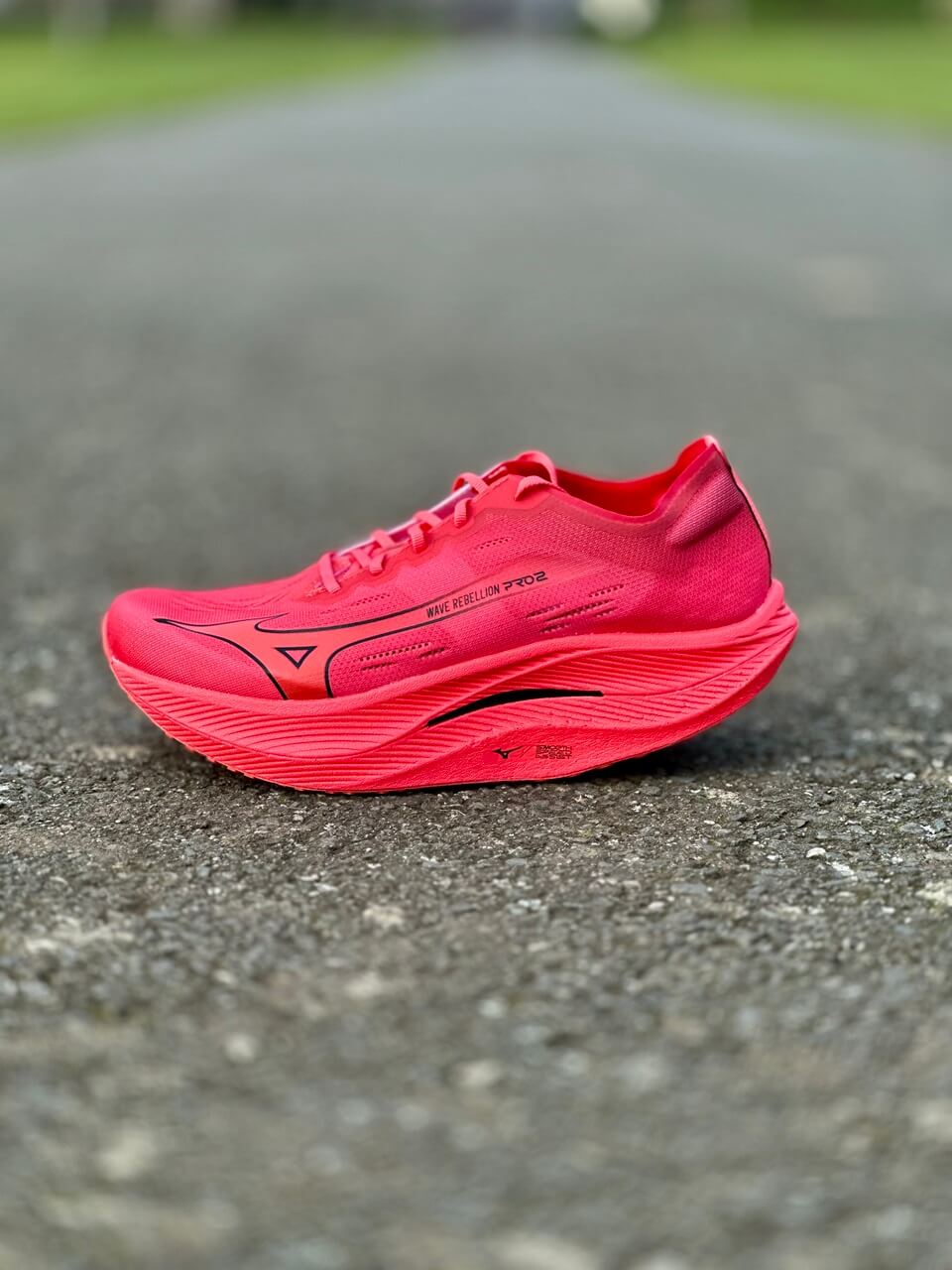
It’s not completely clear if the new Wave Plate design impacts the overall energy return, but there’s changes here too. While it’s still a carbon infused nylon Wave Plate, the construction is notably different. As the first version felt pretty firm, the plate had a cut-out in the forefoot to increase softness. In contrast, the Rebellion Pro 2 now features a full-length Wave Plate with no cut-out. Additionally, the plate has ribs in it to promote an even snappier feel. A small, but important detail, is that the plate curves up at either side of the midfoot section - we expect this helps improve stability.
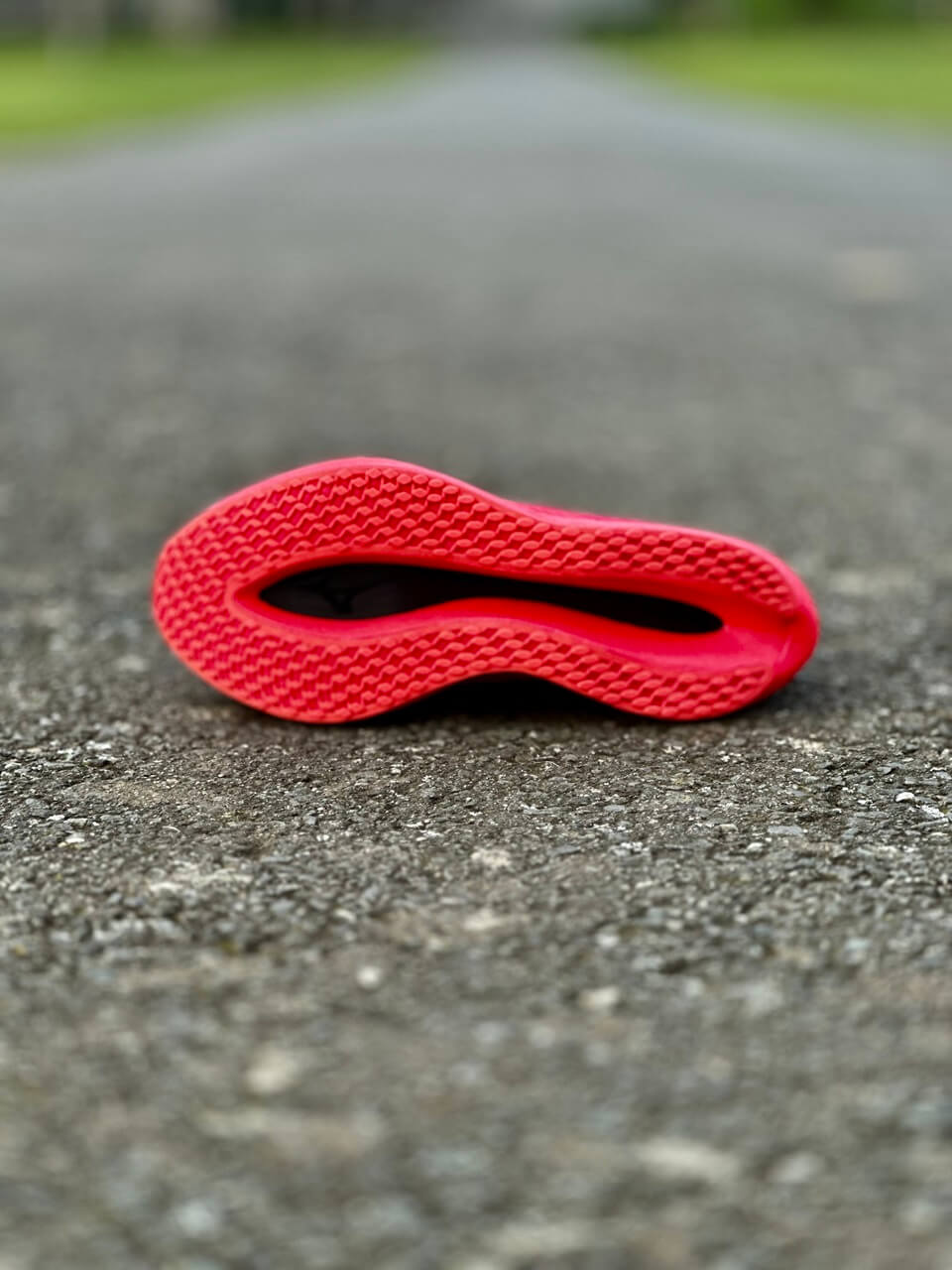
Inline with this, the midsole is also broader in the midfoot area. This is simply to offer better underfoot stability and confidence. We should also note that while the weight has gone down, the stack height in the forefoot has increased. The Wave Rebellion Pro 2 stack is 38 mm to 36.5 mm, versus a 39 mm to 33 mm stack in the original model. The men's now weigh 215 grams and the women's weigh 180 grams. This means they sit at the lighter end of the scale in the super shoes category.
Upper:
There aren’t significant changes to the upper design - but any alterations should improve the fit and feel while running at faster paces. A new triple shoelace loop should increase lockdown. While a more streamlined ankle collar design should deliver a sock-like fit. Small internal pods replace the padded heel collar that last edition features.
An internal support strap is still positioned in the midfoot section. The breathable engineered mesh upper also feels very similar.
What's Smooth Speed Assist?
Mizuno’s Smooth Speed Assist technology sparks the debate as to who the Wave Rebellion Pro 2 are suited to. This is because the uniquely shaped midsole features an angled design that should lead to more midfoot contact time during a marathon. Ultimately helping runners maintain a fore-mid foot strike throughout the race.
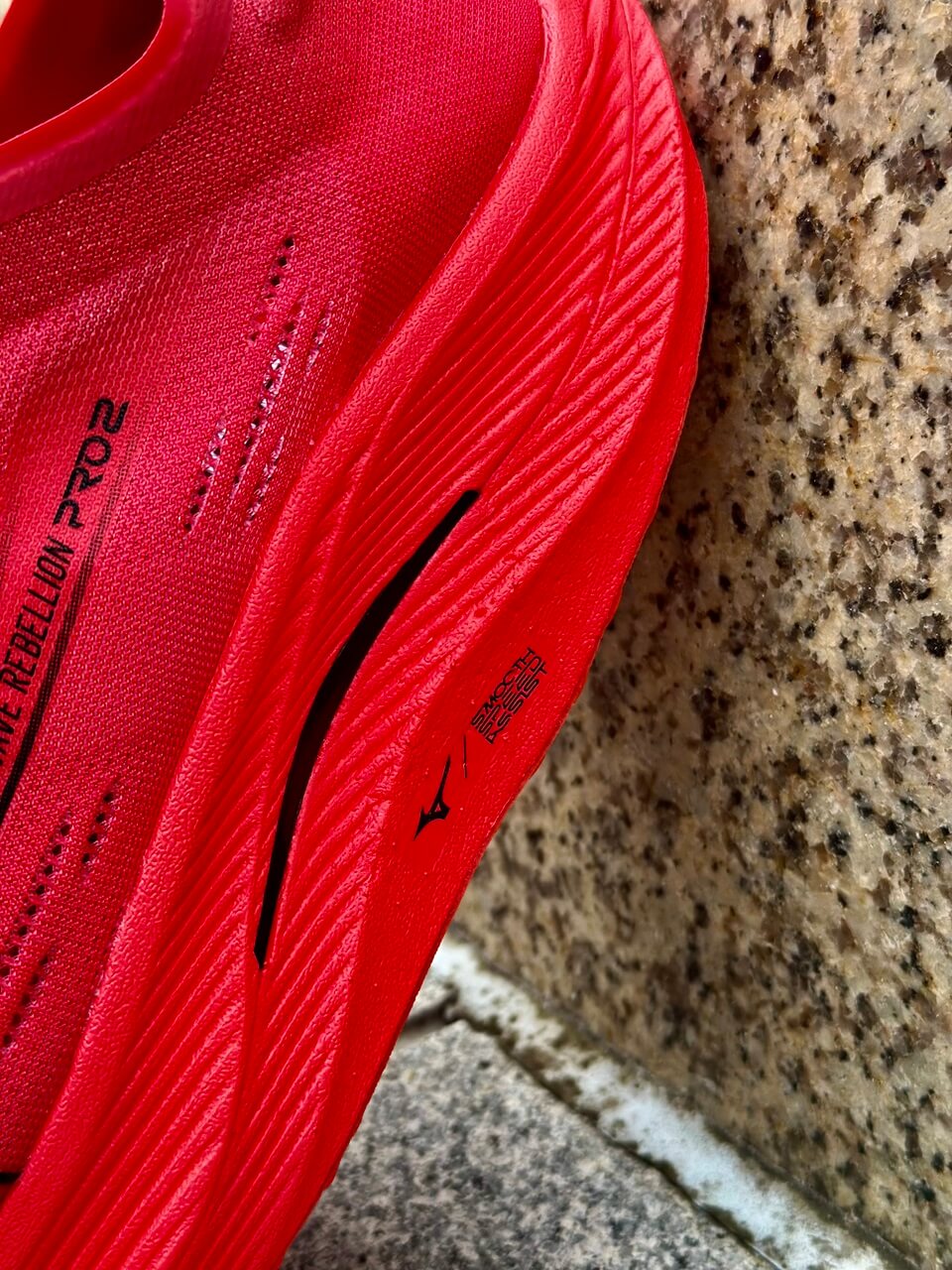
So, does this mean the Wave Rebellion Pro 2 are not suited to heel strikers? Furthermore, if you’re running slower than 2 hour 30 minute marathon pace, will the Wave Rebellion Pro 2 not work? Well, we tested them out to answer these questions.
Mizuno Wave Rebellion Pro 2 test run
The following is by no means a scientific test - however, we made an attempt to quantify how the Wave Rebellion Pro 2 feels to run in over a range of paces. I should also add that I land fairly prominently on my heel.

I took them out on a progressive build run. This involved running at a set pace and increasing the speed every 10 minutes. It looked like this:
- 10 minutes at 5.40min/km pace (3:58 marathon split)
- 10 minutes at 4.58min/km pace (3:29 marathon split)
- 10 minutes at 4.29min/km pace (3:08 marathon split)
- 10 minutes at 3.58min/km pace (2:47 marathon split)
- 10 minutes at 3.33min/km pace (2:29 marathon split)
How did the midsole perform?
It’s important to note that this is not a perfect reflection of how the cushioning will feel - as biomechanics are likely to change as your effort level changes.
At ~3:58 marathon pace, the midsole felt pretty strange. It felt as if I was landing on a pretty firm bump, which was the prominent curve in the midsole. At this type of effort, I didn’t feel as if I was getting any benefit from the midsole geometry and the shoes were almost working against me.
As I picked up the pace to ~3:29 marathon pace, the sensation started to improve and felt a little bit more fluid. However, it still didn’t feel very natural and I was very aware of the midsole. It’s a strange experience, as this is so different from everything else out there. I should add, the new Enerzy Lite+ feels really soft and bouncy though. Meaning the cushioning feels a lot more comfortable than the previous edition at slower paces.
Finally, as I moved down to ~3:08 marathon pace, the midsole started to kick into action. The cushioning didn’t feel as propulsive at this pace as some competitor models, but it definitely was working. Upping the speed to ~2:47 marathon pace didn’t change the underfoot sensation too much. Yes, the midsole probably felt slightly more fluid, but the overall experience was very similar.
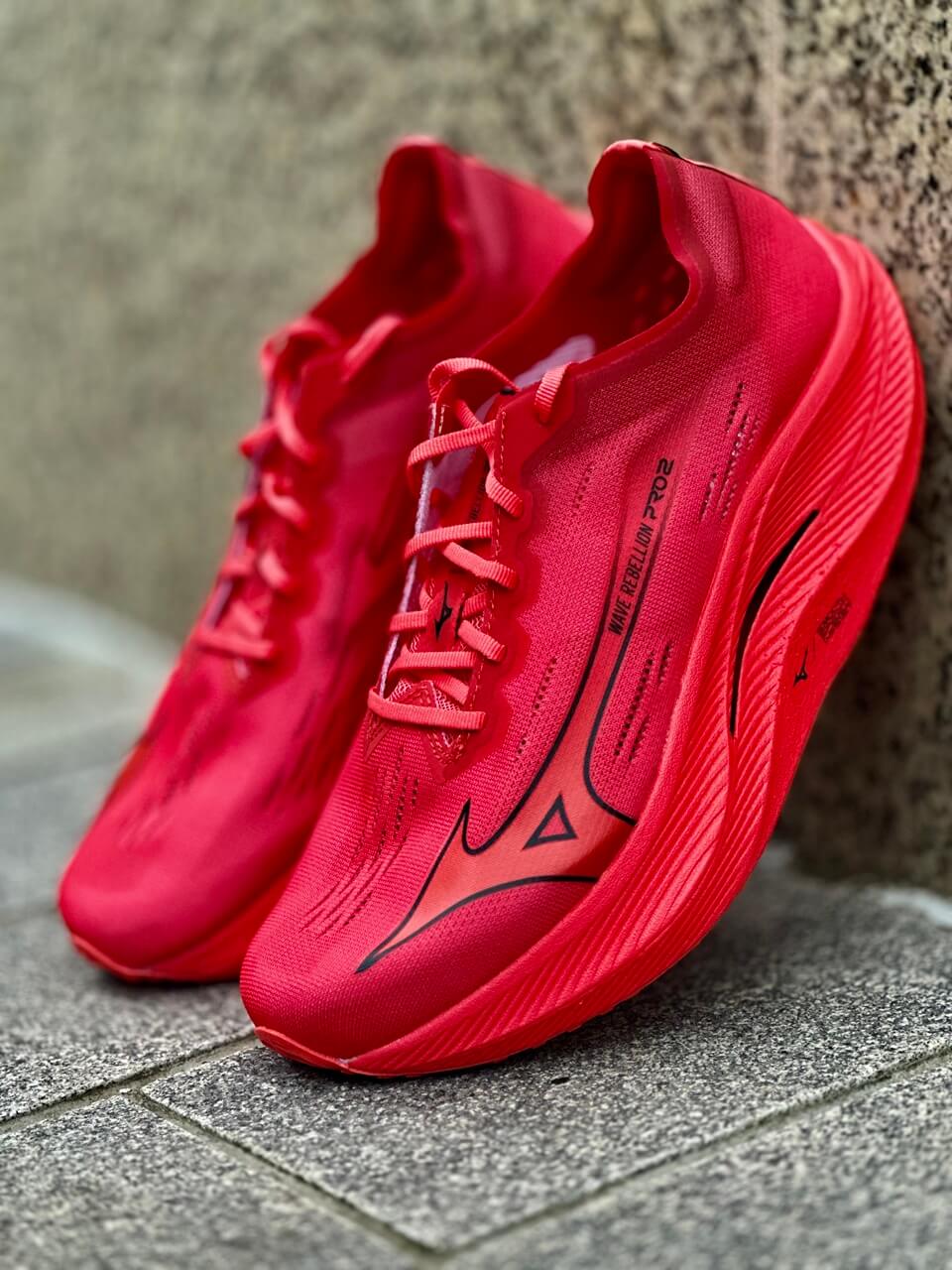
In contrast, when I started running at ~2.29 marathon pace, the shoes came alive. Suddenly the extreme rocker design took effect and it felt like I was running on wheels. The midsole almost became unnoticeable as the transition from landing to take-off was so smooth. I wasn’t totally aware of where my feet were landing, but it certainly wasn’t on the forefoot. What I would say is that I could barely feel my lower leg area working. The midsole was clearly taking a lot of load off my calf muscles and Achilles tendon. All in all, the cushioning feels exceptionally good to run in at this pace and makes the effort feel very sustainable.
What pace are the Wave Rebellion Pro 2 best suited to?
It’s probably evident from the information above that the Mizuno Wave Rebellion Pro 2 are indeed best suited to faster paced running. However, they do feel propulsive and comfortable at a relatively broad range of paces. It’s likely that if you’re running at sub 3:15 marathon pace that you’ll feel a big benefit. Although, it’s worth highlighting that they are likely to feel better and help your running economy even more as you run faster. Additionally, the midsole may feel awkward if you slow down. This means the Wave Rebellion Pro 2 are going to perform at their best when you’re running at a consistent pace, or negative splitting an event.
You could wear the Wave Rebellion Pro 2 if you’re running closer to 3:30 to 4:00 hour marathon pace. Albeit, we would recommend other options for this. The reality is that models with more cushioning in the heel area should feel more comfortable and natural.
At the same time, foot strike doesn’t appear to affect who the Wave Rebellion Pro 2 will and won’t suit. As a prominent heel striker, I found the midsole complimented my gait very well. In short, the Mizuno Wave Rebellion Pro 2 are suitable for heel strikers.
How can the Wave Rebellion Pro 2 improve your run?
There’s no doubt the Mizuno Wave Rebellion Pro 2 are amazing running shoes for runners who are aiming for fast times in half marathons and marathons. The unique geometry feels a bit like running on wheels when you’re hitting faster times. I’d say the biggest benefit of the Wave Rebellion Pro 2 is how much stress they take off the calf muscles. It’s fair to say a lot of runners struggle in later stages of a race because their calf muscles tighten up - these are likely to help reduce the chances of that happening.
The midsole also feels very supportive. Despite this version feeling much more cushioned and softer than the first edition, they feel more stable. This confidence is also enhanced by the G3 outsole which is arguably one of the best outsole rubbers around. It’s so grippy and light. So, if you’re looking for maximum propulsion, but are concerned about stability, the Wave Rebellion Pro 2 should be great options.
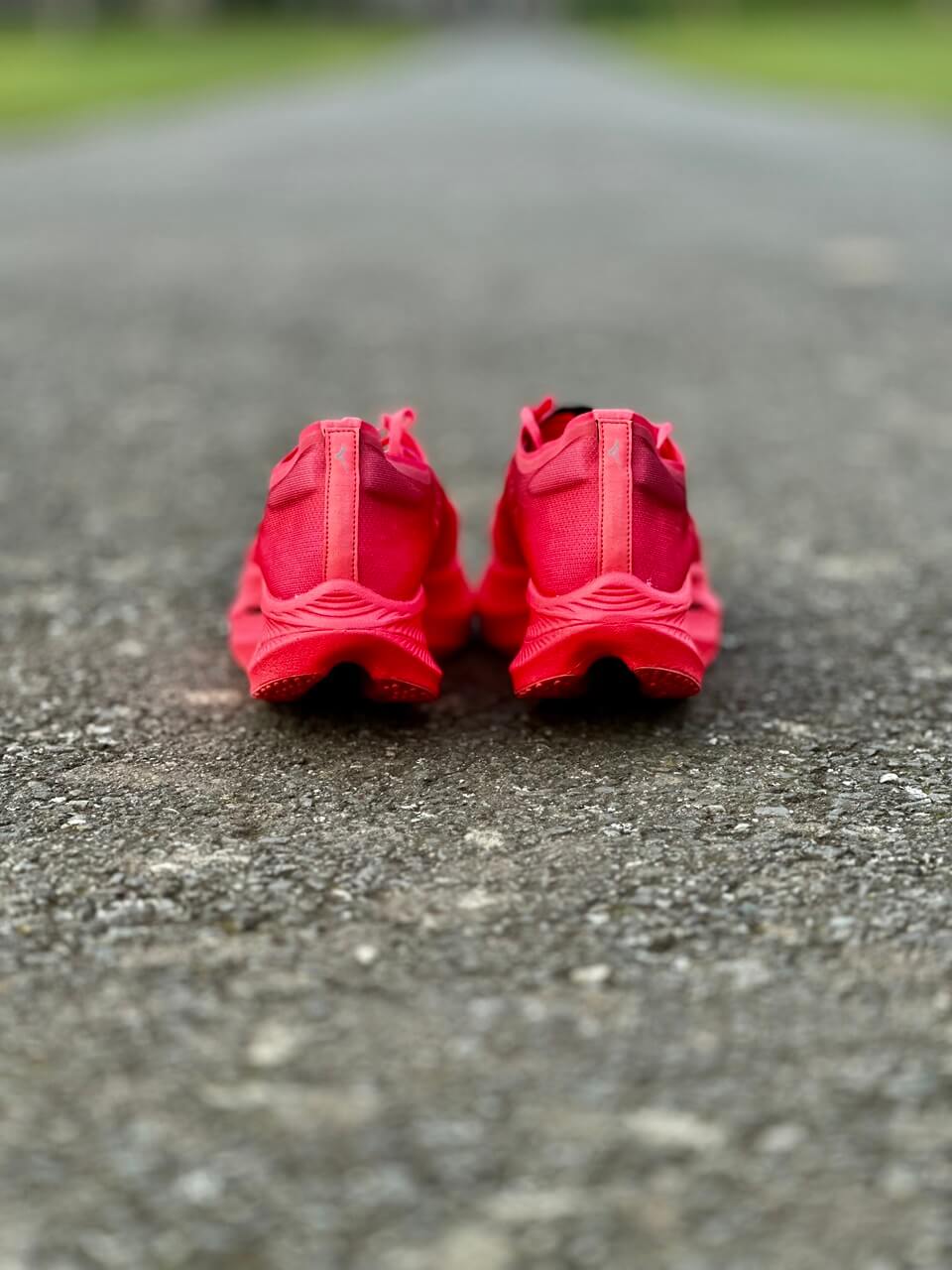
We’ve not talked much about fit, but they feel great on the feet. The midfoot lockdown is exceptionally good and there’s no seams that rub. I found the first edition a little bit rigid around the front of the toe box, and these feel softer. Resulting in a more comfortable feel. The only point is that the heel counter doesn’t offer a lot of support, but the midfoot structure makes up for this.
In summary, the Mizuno Wave Rebellion Pro 2 are definitely more comfortable than the previous version. This is because they’re softer, more energy returning, and the upper feels better. They’re going to work best for runners who are running closer to 2:40 marathon pace and below, but they should still help runners that are trying to get under 3:15. They’re also not just for mid to forefoot strikers. You can in fact wear these if you’re a heel striker.
 Make 3 interest-free payments.
Make 3 interest-free payments. 
